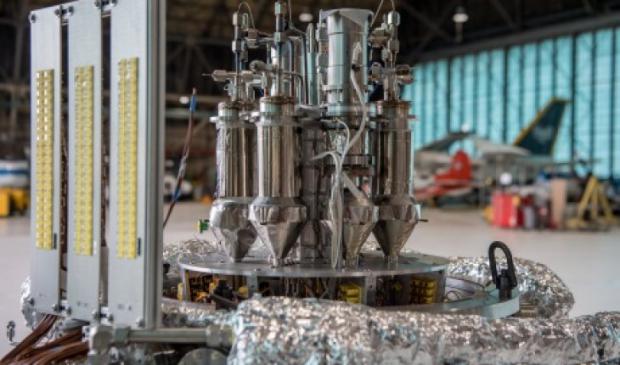
Breaking News
 James O'Keefe: My entire speech at AmericaFest 2025. We're not stopping. Join us to expose..
James O'Keefe: My entire speech at AmericaFest 2025. We're not stopping. Join us to expose..
 U.S. vs. Chinese Military Comparison – Focus on Asia-Taiwan Scenario
U.S. vs. Chinese Military Comparison – Focus on Asia-Taiwan Scenario
 DoJ Sues Four More States for Failing To Produce Voter-roll Data
DoJ Sues Four More States for Failing To Produce Voter-roll Data
 World's Largest Aviation Giant Abandons Google Over Security Concerns
World's Largest Aviation Giant Abandons Google Over Security Concerns
Top Tech News
 Perfect Aircrete, Kitchen Ingredients.
Perfect Aircrete, Kitchen Ingredients.
 Futuristic pixel-raising display lets you feel what's onscreen
Futuristic pixel-raising display lets you feel what's onscreen
 Cutting-Edge Facility Generates Pure Water and Hydrogen Fuel from Seawater for Mere Pennies
Cutting-Edge Facility Generates Pure Water and Hydrogen Fuel from Seawater for Mere Pennies
 This tiny dev board is packed with features for ambitious makers
This tiny dev board is packed with features for ambitious makers
 Scientists Discover Gel to Regrow Tooth Enamel
Scientists Discover Gel to Regrow Tooth Enamel
 Vitamin C and Dandelion Root Killing Cancer Cells -- as Former CDC Director Calls for COVID-19...
Vitamin C and Dandelion Root Killing Cancer Cells -- as Former CDC Director Calls for COVID-19...
 Galactic Brain: US firm plans space-based data centers, power grid to challenge China
Galactic Brain: US firm plans space-based data centers, power grid to challenge China
 A microbial cleanup for glyphosate just earned a patent. Here's why that matters
A microbial cleanup for glyphosate just earned a patent. Here's why that matters
 Japan Breaks Internet Speed Record with 5 Million Times Faster Data Transfer
Japan Breaks Internet Speed Record with 5 Million Times Faster Data Transfer
Small and passively safe Nuclear reactors for NASA and military missions

The low power means very little of the uranium is burned up. Therefore, the fuel does not swell and releases very little gas.
The kilopower reactor running for 15 years would have 0.12% swelling. This is less than 10% of swelling from the heat generated.
Radiation damage is also so little it can be ignored.
Generating heat at 1200K can be used to efficiently convert the heat to electricity with a Stirling engine. The core power would be limited to 4 kWt.
Beryllium Oxide surround the core to reflect the neutrons back so that the system is only critical within the reflectors for safety and to keep the core smaller. 300 kilograms of low enriched uranium (7%) is enough to make the reactor work.
Los Alamos National Research lab is helping to design small compact fast reactors like KiloPower and Megapower. They are designed to maximize mechanisms so the reactors are totally self-regulating. The Los Alamos objective is to design-in self-regulation as the front-line feature in order to minimize technical and programmatic risk and to demonstrate via testing that self-regulation is both reliable and repeatable.

 Advanced Propulsion Resources Part 1 of 2
Advanced Propulsion Resources Part 1 of 2

